Lesbian Love and Sex in Art History
14 APRIL 202218 MIN READ
Lesbian love and sex is rarely seen in classical art history. But if you dig deep enough you will see many examples of artworks from the earliest history to modern times which show that homosexuality is an element of human nature.
Lesbian Love in the Classical Period
Throughout most of history and in many cultures women were second-class citizens. Therefore, the biggest problem with the early depictions of lesbianism is that it was men who made it. As a result, we don’t really know what the women were feeling and experiencing.

However, we can get an idea of how lesbianism was viewed by society. One of the oldest examples of the depiction of lesbian erotic is the ancient Greek ceramic vessel you can see above.

Also, Sappho lived in this period. Sappho was an Archaic Greek poetess from the island of Lesbos (from there the term lesbianism comes). Historians still discuss her sexuality. Still, according to her works, she was familiar with same-sex relationships. This is why later in history she was a huge inspiration for lesbian art.
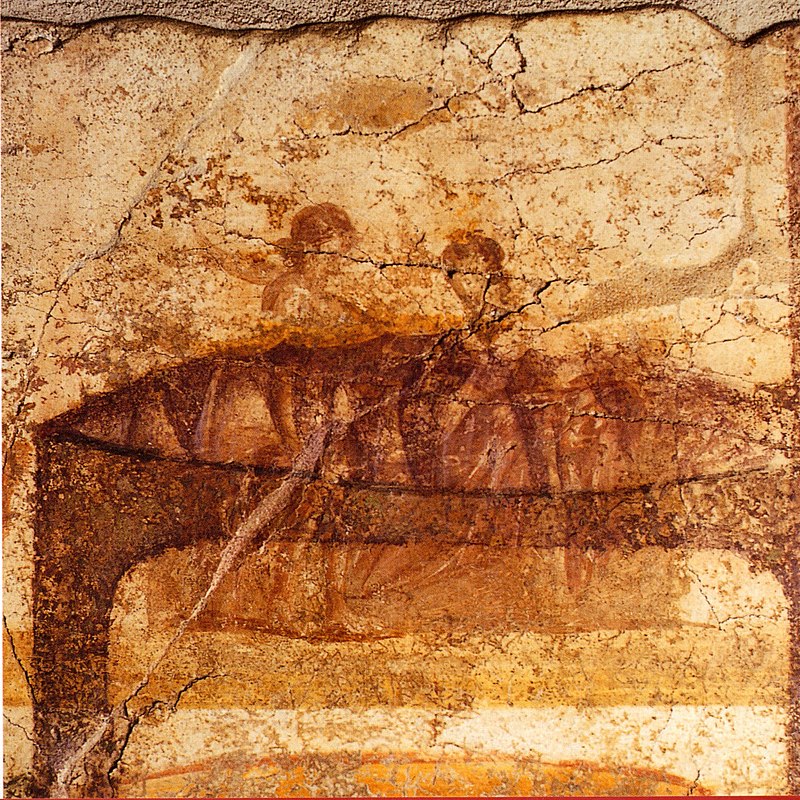
In the Roman Empire, paiderastia and lesbianism were not at the same level of acceptance. Obviously, it was because of the strictly defined gender roles. On the other hand, the Bible condemned strongly both male and female same-sex relationships from the earliest days.
On the Other Side of the World
The cultural view on lesbian love and sex may be much different on the other side of the world. There are many lyrical and beautiful depictions of lesbianism to be found in old books.
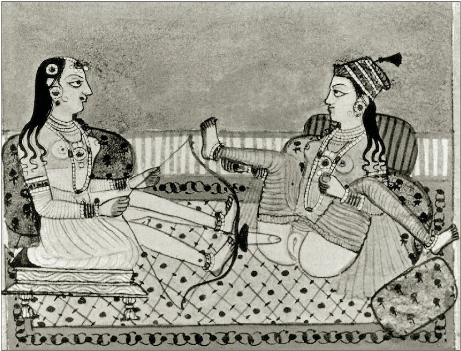
Here we have an illustration from a 17th-century Persian translation of an Indian sex manual. The meaning is not literal, it’s a metaphor for a female same-sex position using a dildo.
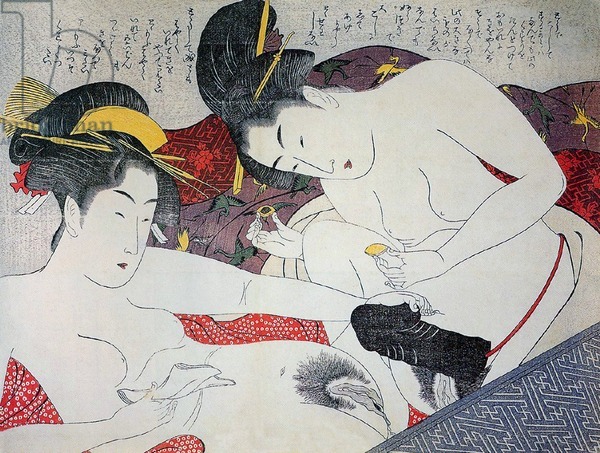
Additionally, lesbian sex was a popular theme for Japanese shunga. For example, up above is a depiction of two women getting ready to have sex using a strap-on dildo. One of them is also holding a container with some kind of cream inside, probably some sort of lubricant.
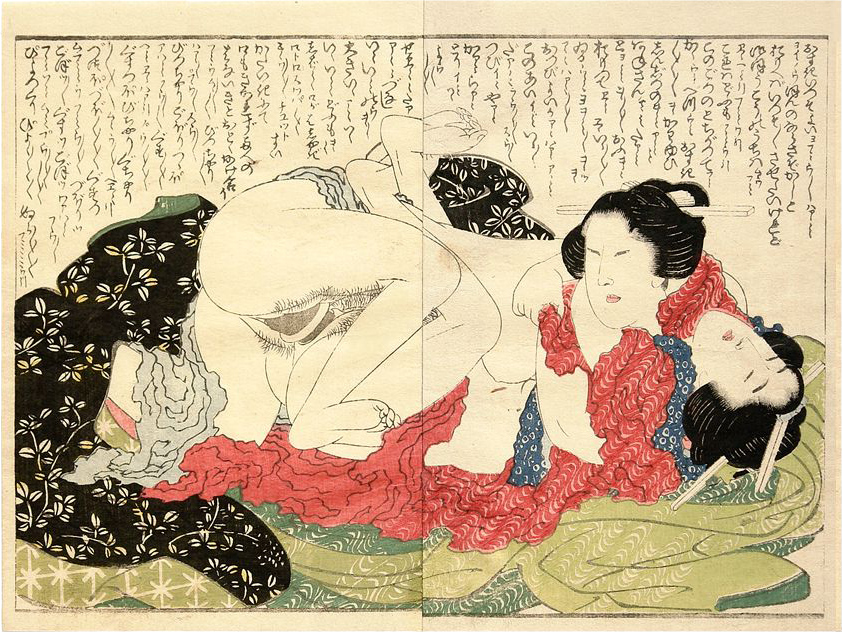
Here is one more beautiful example of shunga art. Katsushika Hokusai, the man behind The Great Wave off Kanagawa, made it. It shows a lesbian couple engaging in intercourse using a double-ended harigata (dildo).
Lesbian Love in the Modern Period
The Middle Ages and Renaissance didn’t have any relevant works. However, from the 18th century, lesbian art and love became more culturally visible. Many artists, mainly male, depicted female lesbian relations and in this way expressed their opinion on lesbianism.

I will start with a masterpiece by Gustave Courbet. Courbet was famous for rejecting social norms and traditional views. He liked to show the bare truth, even if it would cause criticism. For example, one of his most controversial works is the one above, The Sleepers. It even was not allowed to be exhibited publicly until 1988.

Opposite to Coubert, who openly spoke up about lesbianism, was Auguste Rodin. Rodin created many artworks on the theme of lesbianism, which in his times was considered a mental disorder. The purpose of his works was to shock in order to highlight the dangerous nature of lesbian affection. For example, this work above was never exhibited during the artist’s lifetime due to its “blatant homoeroticism”.

Before the world had Playboy, there were Marquis Franz von Bayros’ illustrations. He was an Austrian commercial artist, illustrator, and painter. His focus was erotic art. He produced illustrations for the Decadence Movement, following the style of Aubrey Beardsley. This print above comes from a portfolio of 15 drawings created in 1907.
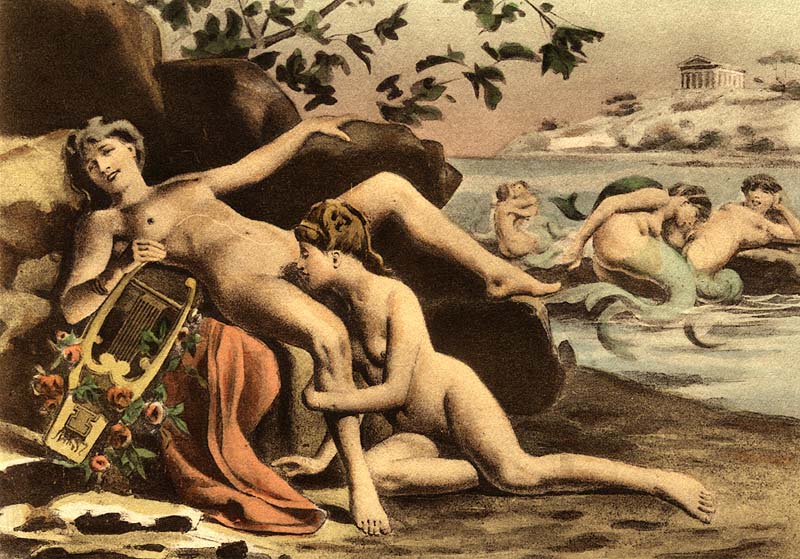
At the turn of the 19th and 20th centuries, a lot of lesbian art was inspired by mythology. Here is an example where the artist was inspired by the story of Sappho.
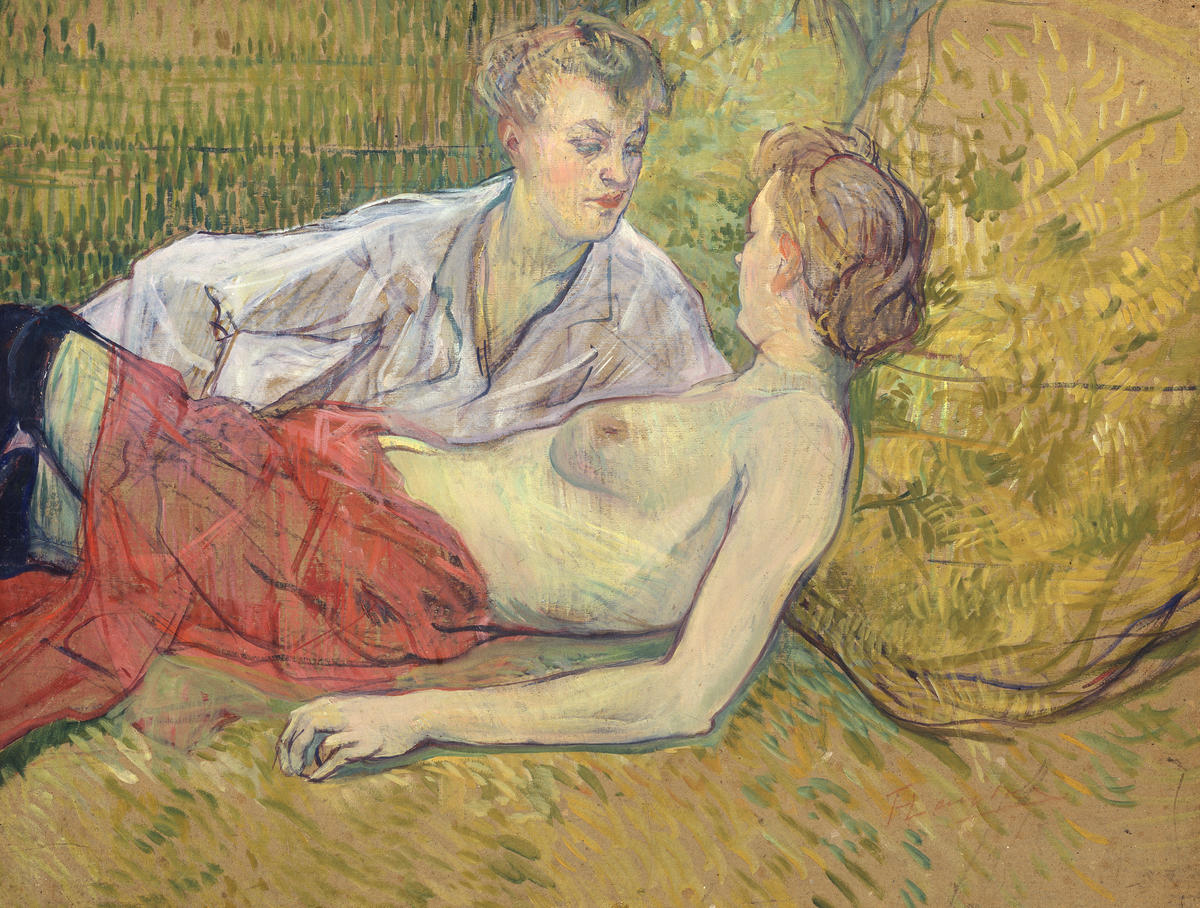
Here we come to the chronicler of Paris social life, Henri de Toulouse-Lautrec. He used to spend a lot of time in brothels, sometimes he even lived in them. It was while painting his friends, prostitutes in brothels, that he witnessed lesbianism first hand. The women he painted were often having romantic and sexual relationships with each other. Consequently, his works sometimes show a strong emotional bond between lovers.

Some intellectuals thought that erotic art could be a socio-political tool and a culturally progressive force. Therefore, Gustav Klimt contributed a lot to the emancipation of women with his work. The painting above shows a lesbian couple with a less erotic passion than tender affection. They look real, happy together, with no feeling of an “unnatural” homosexual union.

Another artist who spoke openly about sexuality in his works is Klimt’s student, Egon Schiele. He had a unique way of shaping the human body. That is to say, in many works, he shows passion, attraction, and longing between two female bodies. Therefore, at the time, many found his work explicit and disturbing.

And for the end, a piece made by Gerda Wegener. Wegener was a Danish fashion illustrator and painter of lesbian art erotica in the 1930s. She also created probably the only same-sex female erotica that was actually made by a woman, an illustration for the 1925 poetry book Les Délassements de l’Éros.
Lesbian Love and Sex in Art Today
Today we finally have female artists speaking about lesbian relationships in all possible ways. The purpose is mainly to challenge the status quo of the LGBT+ community and demystify female lesbian sexuality. For example, some of the more famous names are Jill Posener, Laura Aguilar, Tee Corinne, G. B. Jones, Della Grace Volcano, and Zanele Muholi.

We love art history and writing about i
Lesbian love and sex is rarely seen in classical art history. But if you dig deep enough you will see many examples of artworks from the earliest history to modern times which show that homosexuality is an element of human nature.
Lesbian Love in the Classical Period
Throughout most of history and in many cultures women were second-class citizens. Therefore, the biggest problem with the early depictions of lesbianism is that it was men who made it. As a result, we don’t really know what the women were feeling and experiencing.

However, we can get an idea of how lesbianism was viewed by society. One of the oldest examples of the depiction of lesbian erotic is the ancient Greek ceramic vessel you can see above.

Also, Sappho lived in this period. Sappho was an Archaic Greek poetess from the island of Lesbos (from there the term lesbianism comes). Historians still discuss her sexuality. Still, according to her works, she was familiar with same-sex relationships. This is why later in history she was a huge inspiration for lesbian art.

In the Roman Empire, paiderastia and lesbianism were not at the same level of acceptance. Obviously, it was because of the strictly defined gender roles. On the other hand, the Bible condemned strongly both male and female same-sex relationships from the earliest days.
On the Other Side of the World
The cultural view on lesbian love and sex may be much different on the other side of the world. There are many lyrical and beautiful depictions of lesbianism to be found in old books.

Here we have an illustration from a 17th-century Persian translation of an Indian sex manual. The meaning is not literal, it’s a metaphor for a female same-sex position using a dildo.

Additionally, lesbian sex was a popular theme for Japanese shunga. For example, up above is a depiction of two women getting ready to have sex using a strap-on dildo. One of them is also holding a container with some kind of cream inside, probably some sort of lubricant.

Here is one more beautiful example of shunga art. Katsushika Hokusai, the man behind The Great Wave off Kanagawa, made it. It shows a lesbian couple engaging in intercourse using a double-ended harigata (dildo).
Lesbian Love in the Modern Period
The Middle Ages and Renaissance didn’t have any relevant works. However, from the 18th century, lesbian art and love became more culturally visible. Many artists, mainly male, depicted female lesbian relations and in this way expressed their opinion on lesbianism.

I will start with a masterpiece by Gustave Courbet. Courbet was famous for rejecting social norms and traditional views. He liked to show the bare truth, even if it would cause criticism. For example, one of his most controversial works is the one above, The Sleepers. It even was not allowed to be exhibited publicly until 1988.

Opposite to Coubert, who openly spoke up about lesbianism, was Auguste Rodin. Rodin created many artworks on the theme of lesbianism, which in his times was considered a mental disorder. The purpose of his works was to shock in order to highlight the dangerous nature of lesbian affection. For example, this work above was never exhibited during the artist’s lifetime due to its “blatant homoeroticism”.

Before the world had Playboy, there were Marquis Franz von Bayros’ illustrations. He was an Austrian commercial artist, illustrator, and painter. His focus was erotic art. He produced illustrations for the Decadence Movement, following the style of Aubrey Beardsley. This print above comes from a portfolio of 15 drawings created in 1907.

At the turn of the 19th and 20th centuries, a lot of lesbian art was inspired by mythology. Here is an example where the artist was inspired by the story of Sappho.

Here we come to the chronicler of Paris social life, Henri de Toulouse-Lautrec. He used to spend a lot of time in brothels, sometimes he even lived in them. It was while painting his friends, prostitutes in brothels, that he witnessed lesbianism first hand. The women he painted were often having romantic and sexual relationships with each other. Consequently, his works sometimes show a strong emotional bond between lovers.

Some intellectuals thought that erotic art could be a socio-political tool and a culturally progressive force. Therefore, Gustav Klimt contributed a lot to the emancipation of women with his work. The painting above shows a lesbian couple with a less erotic passion than tender affection. They look real, happy together, with no feeling of an “unnatural” homosexual union.

Another artist who spoke openly about sexuality in his works is Klimt’s student, Egon Schiele. He had a unique way of shaping the human body. That is to say, in many works, he shows passion, attraction, and longing between two female bodies. Therefore, at the time, many found his work explicit and disturbing.

And for the end, a piece made by Gerda Wegener. Wegener was a Danish fashion illustrator and painter of lesbian art erotica in the 1930s. She also created probably the only same-sex female erotica that was actually made by a woman, an illustration for the 1925 poetry book Les Délassements de l’Éros.
Lesbian Love and Sex in Art Today
Today we finally have female artists speaking about lesbian relationships in all possible ways. The purpose is mainly to challenge the status quo of the LGBT+ community and demystify female lesbian sexuality. For example, some of the more famous names are Jill Posener, Laura Aguilar, Tee Corinne, G. B. Jones, Della Grace Volcano, and Zanele Muholi.

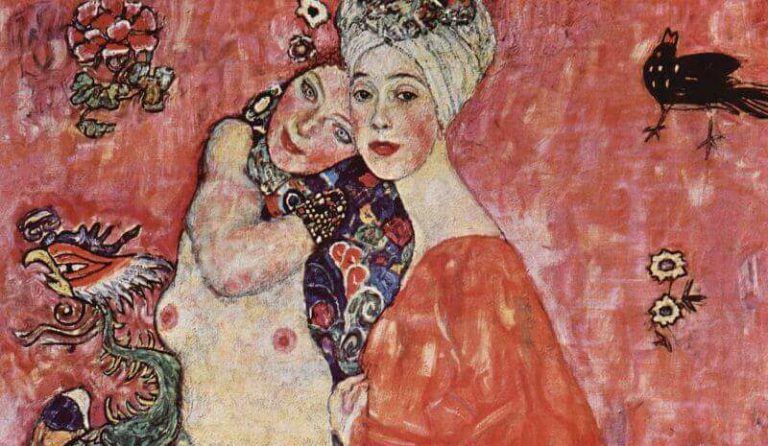
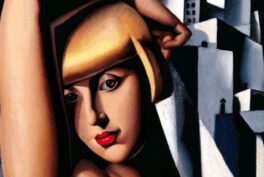
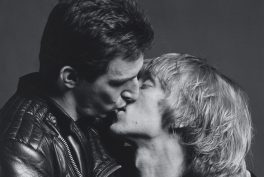


No comments:
Post a Comment